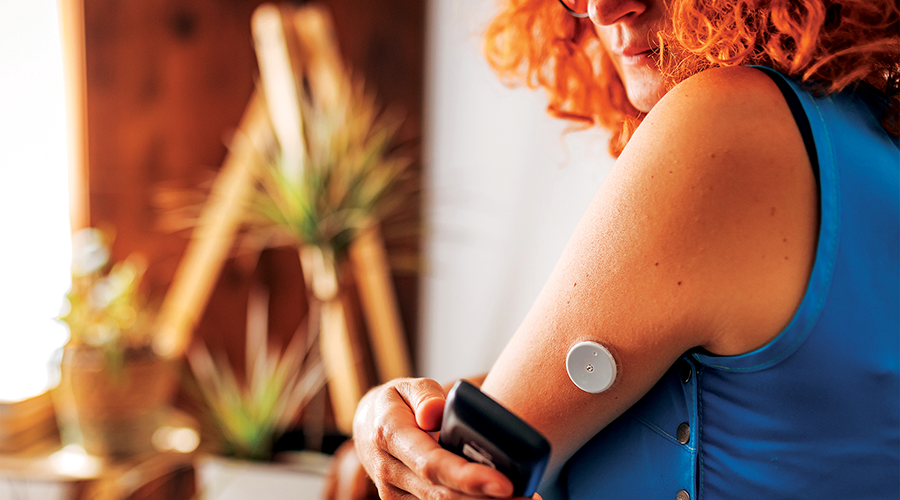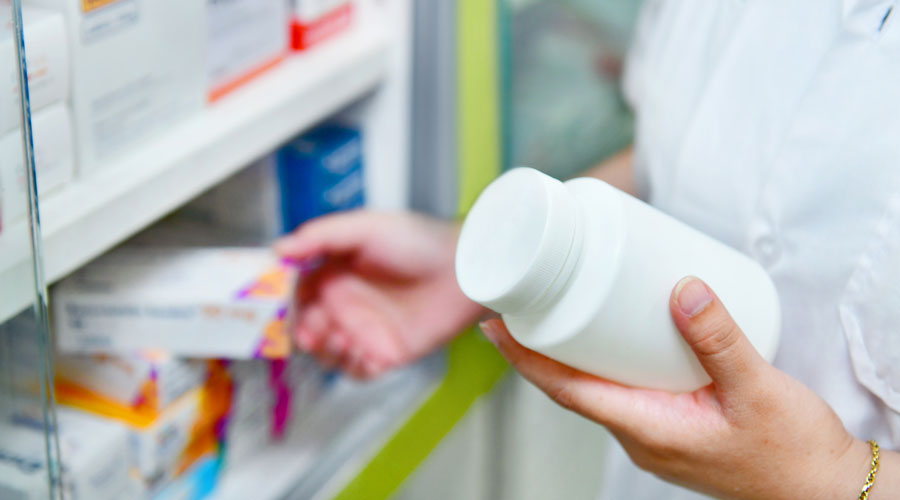Diabetes is a chronic health condition that affects more people today than ever before. About one in 10 Americans have the disease, and one in five people don’t know they have it. This is an area where your independent pharmacy can help.
You can screen patients for prediabetes, test their blood glucose levels, advise patients about diabetes self-management, and help them take their medicines as prescribed. You can also provide information about lower-cost options for medicines and medical supplies.
Monitoring blood glucose levels is a necessary part of daily life for your patients with Type 1 or Type 2 diabetes. The traditional way is for them to prick their finger and check their levels manually. But that can be a pain, literally. An alternative for your patients is continuous glucose monitoring (CGM). CGMs are designed to be worn and used over long periods of time. They’re a simpler and much more convenient option, albeit a bit pricier.
Monitoring blood glucose and insulin administration has transformed from numerous finger pricks in a day to a few swipes on a cell phone. CGMs use a small sensor that’s inserted under the skin. The sensor automatically tests and records your patients’ glucose levels throughout the day. It can also increase the length of time spent in a normal range. And with real-time feedback, patients can take steps to improve their blood glucose levels and decrease the risk of such conditions as hyperglycemia and hypoglycemia.
CGMs were once limited to certain patients. However, today they’re much more widespread because they’re more available and more affordable. In fact, many are now available at local pharmacies. And while anyone can purchase a regular blood glucose meter, your patients will need a prescription from their doctor for a CGM system.
Affordability of CGMs
While CGMs can cost anywhere between $1,000 to $3,000 a year, it really depends on the CGM brand they use. Some systems cost more. Be aware, however, that they will also need to purchase a receiver or reader, replaceable sensors, and a transmitter.
If a patient manages their diabetes at home, they may need other essential supplies that will add to the overall cost. These items include:
- Adhesive skin patches to hold the CGM in place
- Blood glucose meter, lancets, and strips to calibrate the CGM
- Insulin pump
- Smart device (i.e. smartphone) connected to a CGM for real-time data
If you have patients with Type 1 diabetes, they may opt for another option, such as an artificial pancreas or an automated insulin delivery (AID) system. An AID system includes:
- CGM
- Insulin pump
- Program that determines how much insulin they need and signals the pump when to deliver the insulin
The AID system imitates a healthy pancreas. It can help increase the amount of time their blood sugar is in a normal range. It can also help prevent diabetes-related complications. The cost of an AID system is around $6,000 a year, and sometimes more, without insurance.
Most health insurance plans will cover some or all of the cost of diabetes equipment and supplies, including blood glucose meters (BGMs) and CGMs.
How You Can Help
CGMs can do a lot for your patients in helping them manage their diabetes, but it all begins with you and their physicians. As their community pharmacist, you can help identify patients who might qualify for CGM. You can also assist patients and their providers with selecting the device that’s most appropriate for them. You can provide counseling to your patients who are on CGM and interpret CGM results in a way that they’ll understand.
Here are a few of the best CGM devices on the market this year:
Abbott Freestyle Libre 3: This newly updated CGM features the world’s smallest, thinnest glucose sensor that’s about the size of two stacked pennies. Patients don’t have to do anything to see their glucose readings. Instead, the system automatically sends real-time, minute-by-minute glucose readings to a compatible smartphone without scanning. It has the strongest Bluetooth range compared to other CGMs, and it uses significantly less plastic than its predecessors.
Ascencia Eversense E3: While all CGM systems use sensors that are inserted into the skin, the Eversense sensor is inserted by a trained healthcare provider completely under the skin and lasts up to six months. It gives real-time blood sugar (glucose) readings every five minutes for patients with diabetes. It consists of an implantable fluorescence-based sensor, a transmitter, and a mobile app for displaying glucose numbers, trends, and alerts on the patient’s mobile device. This new version can be worn for up to 180 days.
Dexcom G7: The new G7 is 60 percent smaller and easier to wear with fewer components. The 30-minute sensor warm up is the fastest on the market, and it has a 12-hour grace period to replace finished sensors. The mobile app has been redesigned and simplified; alert settings have been improved for enhanced discretion; and it has a smaller, more vibrant receiver, and smaller plastic components and packaging resulting in less waste.
Medtronic Guardian™ Connect system: The Guardian Connect only contains a sensor and a transmitter, with no reader device. Patient glucose-level readings can only be viewed on the Guardian Connect app, which makes it convenient to share glucose readings and alerts with family and friends. Up to five people can sign up to receive text messages for low-glucose alerts. The Guardian Connect transmitter sends glucose readings to the app every five minutes via Bluetooth. This system is also waterproof up to 7.8 feet for 10-minute periods.
While CGMs are helpful, patients can easily get overwhelmed using them. Some may not understand how they work or how their readings are different from a traditional fingerstick glucose reading. As an independent pharmacist, you are trained and skilled to guide your patients through the process. You can encourage them to set alarms and alerts, show them how to understand the data on their device, and how to share that data.
Empowering your diabetic patients to learn from their CGM statistics will give them confidence. By seeing the direct effects of foods they eat, medications they take, and their physical activity in their readings, it will empower them to engage in healthier behaviors.
Nondiabetics and CGMs
Can CGMs help those who aren’t diabetic? There are some people who use CGMs who don’t have diabetes. Athletes sometimes use these devices to help with
their mental or physical performance. Others use them as a way to help prevent diabetes. However, health insurance plans may not cover CGMs if you:
- Don’t have diabetes
- Have prediabetes (abnormal blood
sugar levels) - Develop gestational diabetes (a type of diabetes that can occur during pregnancy)
Some studies do show benefits for the use of CGMs by nondiabetics, but only in these specific healthcare situations:
- People with end-stage renal disease may use CGMs during hemodialysis, where changes in blood sugar concentrations can help guide treatment.
- People who have undergone a kidney transplant may experience high blood sugar. A CGM can monitor blood sugar and flag patients at risk for post-transplant diabetes and graft failure.
- Children with epilepsy who are treated with a ketogenic diet may wear CGMs to monitor blood glucose levels to help manage their diet.
From the Magazine
This article was published in our quarterly print magazine, which covers relevant topics in greater depth featuring leading experts in the industry. Subscribe to receive the quarterly print issue in your mailbox. All registered independent pharmacies in the U.S. are eligible to receive a free subscription.
More articles from the June 2023 issue:
- Cracking Down on Copycats
- Leveraging Non-Pharmacy Assets
- Diagnostic Testing
- Mental Health Care
- Arthritis Care
- Mentoring a Junior Partner
- Quit for Good
- Diabetes Management
A Member-Owned Company Serving Independent Pharmacies
PBA Health is dedicated to helping independent pharmacies reach their full potential on the buy-side of their business. Founded and run by pharmacists, PBA Health serves independent pharmacies with group purchasing services, wholesaler contract negotiations, proprietary purchasing tools, and more.
An HDA member, PBA Health operates its own NABP-accredited warehouse with more than 6,000 SKUs, including brands, generics, narcotics CII-CV, cold-storage products, and over-the-counter (OTC) products — offering the lowest prices in the secondary market.












